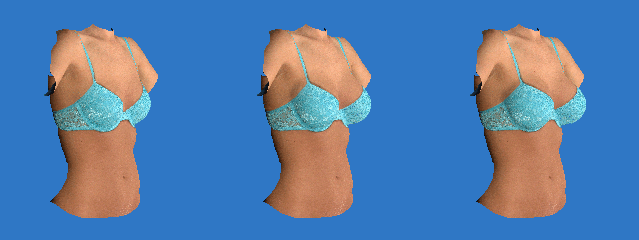What Makes Vectra 3D Simulation Different
Most exciting is that the sophisticated computer algorithms can simulate the result that any of the hundreds of available implant shapes and sizes would create in you. You can compare size, profile, and shape. What will a teardrop highly cohesive implant look like? What about the softest round gel? It can do this and everything in between.
Of course it can also simulate various sizes. How would one size bigger or smaller look? It is important to know that this is a tool. No computer is yet capable of considering all the variables. But you will get some sense of the shape a particular implant will create, and the proportion of that size relative to your body. Imaging should not be used as a method to pick a size. Measurements and patient request determine the size, and Vectra is used for you to visualize that result and perhaps decide between small differences in shape and size.
When breasts are only a little droopy, the newest software is able to simulate a lift, though it does not work if your breasts are so droopy that a camera cannot see all the way underneath them to capture the image.
Of course, like any simulation, Vectra is not perfect, but it gives an excellent approximation. Sometimes that approximation is spot on, and other times it is not. But Dr. Teitelbaum has found it to be far and away the most helpful forecasting tool available—and his patients agree. Many say that the digital imaging played a big role in giving them confidence that their implant choice will give them the result they desire.




